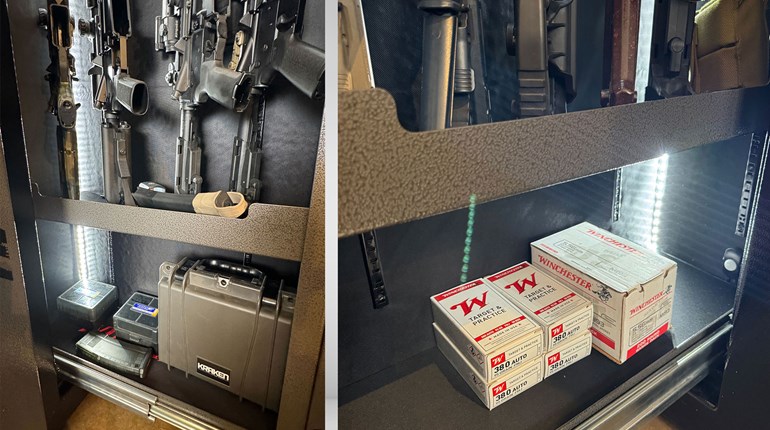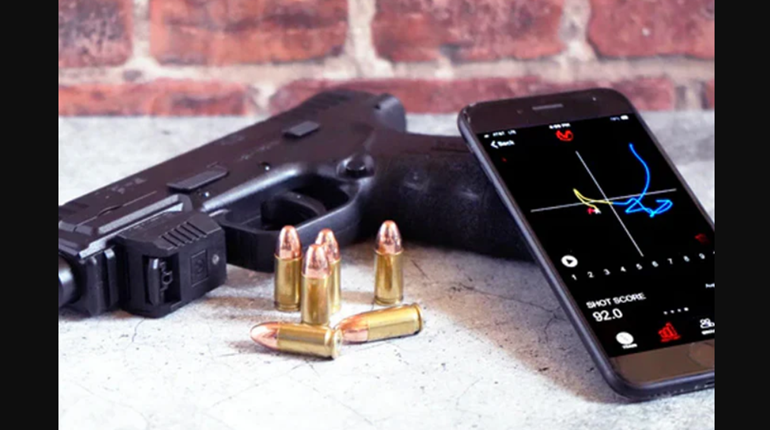
Shooting Range Alternatives
One of the enjoyable and productive parts of owning a firearm is using it on the range. The empowerment and satisfaction that we get from mastering the principles of marksmanship when using our firearm is independent of the firearm’s purpose. I can be satisfied with the work I put in to zero and group my hunting rifle, and just as satisfied when I master my draw and make first round hits with my concealed-carry firearm. And similarly, earning a new classification in competition or finishing in a certain percent of our division can give us new motivation to compete. But what do we do when we are not able to get to the range? I’m going to share some alternative ideas to the classic “range day,” and hopefully inspire you to persist in your training and marksmanship, even if you can’t put rounds downrange.
Range Day Alternative: Dry Fire
People who don’t have range access due to their work schedule, or other factors, like freezing winter temperatures that keep them from going to the range do not have to sit idly by. You can still work with your firearms by using the concept of dry fire.
Dry fire is the act of manipulating the firearm and pulling the trigger without an actual round in the chamber. You can practice skills like your draw, lining up the sights, and magazine changes. Competition shooters mix dry fire into their practice routines because it gives feedback on how you are manipulating the firearm, and what your eyes and hands are doing, without recoil playing a role. This can be an effective way to reduce anticipating recoil and other bad habits.
There are many resources for dry fire online and in print. Some of the most well-known resources are books that you can order off Amazon. But a few minutes on YouTube will yield hours of options. Finding videos from someone who competes or holds classes will help you pick options that tend to incorporate the rules of firearms safety.

Key Points for Dry Fire Training:
- NEVER bring ammunition into your dry fire area. Make sure your firearm and all magazines used are empty before each session!
- Pick a place to dry fire that keeps your firearm pointed in a safe direction. This is part of knowing your target and beyond, and treating every firearm as if it were loaded. An example would be facing your outside basement wall when you dry fire.
- Pick a specific task to focus on: your draw, magazine changes, transitioning from one target to another, etc.
- Never dry-fire rimfire guns, this could damage your firing pin/striker, as it hits the outside edge of the chamber on a rimfire gun.
- Set up your phone or camera and learn from your dry fire. This is a great way to see how clothing interferes with your draw, what your hands do, or what your eyes are doing.
Dry Fire Tools
You can even train using tools that utilize lasers and other technology to track your muzzle/barrel movement, as well as assess a “shot” and it’s placement in a virtual group that you can view in an app. Some offer replay that shows your before shot and after shot movements. Forget video games! These tools can be very enjoyable and challenging!
Range Location Alternatives
Just because our favorite range or club is not open, does not mean there is nowhere to shoot. Many people have a friend or relative with land that makes a suitable place to plink or sight in a rifle. Understanding what it means to “Know your target and beyond” will come into play, if we chose this sort of alternative range. How do we determine what is “safe”? There are online resources, and guidelines to building a home range. And even free materials from government agencies, which even though geared for commercial ranges, can give you insight into considerations on sunlight, footing, and other facets impacting safety.
Some general considerations when shooting outside of a commercial range and on private property:
- Make sure you have permission from the landowner.
- Practice the 4 rules of firearms safety
- Make sure your target has a backstop or berm suitable for the round you are using and that your rounds ONLY impact into the backstop and nowhere else. It’s NOT safe to assume that grandpa’s hundreds of acres of woods are empty to shoot into.
- Make sure nothing beyond the target is within range of the round that you are using. This includes houses, businesses, roads and waterways. Any point of access that could bring someone into what you consider “downrange” must be assessed.
- Make sure you establish clear directions of fire, a firing line, and a process to go down range if you are shooting with other people on your home range.
- Unload firearms every time you decide to go downrange to check a target.
- Be considerate of neighbors and livestock if you shoot in the country.
- Consider what materials you mount your targets on, and ensure a safe distance from steel targets. *Note: Steel targets are not impenetrable. You should not shoot steel with a rifle unless you know that it is rifle-rated steel. And you should not shoot steel with a pistol unless it is at least 10 yards away. For rifle, the general rule is 100 yards away, and only then if the targets are rated for rifle.

Good Country “Range” Options
Sometimes local counties will allow residents to zero deer rifles at sights the community his historically used, such as an old gravel quarry. These usually are sunken, and have sold earth backstops that remove worries about what is beyond your target. Other ideal settings are steep embankments or hills that create a natural berm. A good option for sighting in your deer hunting rifle, if you don’t have a berm, can be a large log, placed on end, with a wall behind built out of several layers of railroad ties, sometimes with earth between. If your family farm holds the distance for a range, but not a berm, you can consider building a wall to retain earth, and line it with additional material to retain rounds. You could dig into the side of a hill to create a higher somewhat natural berm. Whatever your setup, read about the required thickness of material you need to stop the round. You should also be aware of items that can cause safety issues, so you know what NOT to use for berms or targets (Example: tires, bowling pins, damaged steel).

Safety First and Foremost
Even commercial ranges can pose dangers to innocent people. If a bay or berm is rated for pistol shooting only but someone uses it for a rifle, the results can be deadly. So know your range, know your firearm’s capability, and if in doubt, opt for safety. If your home built range only allows you 50 yards, make sure your targets are the right material for the round and firearm you are shooting. Always wear eye and ear protection! And review the rules of firearms safety with anyone who shoots with you. It’s easy to assume that our family or friends know and will follow the rules, but a few minutes spent refreshing each other can make a big difference. Grandma might have seen grandpa shoot for decades, but she might not know the rules, so don’t make assumptions when it comes to safety. Follow the rules, even when nobody's watching!
Mental Persistence Is Never “Closed”
No matter the reason that you can’t get to the range, you never have to close your mind to bettering your skills. Finding an alternative is as much about mental fortitude as it is about physical persistence. So keep your mind in what you are doing, and you will find a way to hone your skills, even if your range days are delayed.
About the Author: Becky Yackley competes in the shooting sports across the country and around the world with her husband and three sons. She has spent much of the last 20 years holding down the fort while her husband proudly serves our country in both the Marine Corps and state law enforcement. Her writing, blogging, and photography are ways that she shares her unique perspective on firearms, competition, hunting, and the Second Amendment, especially as it applies to mothers on their own. She grew up the daughter of a gunsmith, and with her siblings competed in NRA Highpower and Smallbore, and she has since competed in more disciplines than almost any woman involved in the shooting sports. From IPSC, USPSA, Bianchi Cup, 3 Gun and more, she enjoys sharing that to be proficient and knowledgeable with a firearm is within the reach of anyone! She’s the founder a 501c.3, 2A Heritage Ltd., and works with industry partners and other volunteers who share the ethos of bringing new youth into the shooting sports with personal commitment to safely sharing an historically American pastime.















































